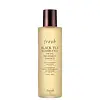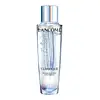What's inside
What's inside
 Key Ingredients
Key Ingredients

 Benefits
Benefits

 Concerns
Concerns

 Ingredients Side-by-side
Ingredients Side-by-side

Water
Skin ConditioningSaccharomyces Ferment Filtrate
HumectantGlycerin
HumectantCamellia Sinensis Leaf Extract
AntimicrobialPentylene Glycol
Skin ConditioningPolyglycerin-3
HumectantKigelia Africana Fruit Extract
Skin ConditioningCitrus Unshiu Peel Extract
MaskingSodium Hyaluronate
HumectantAdenosine
Skin ConditioningTocopheryl Acetate
AntioxidantTocopherol
AntioxidantButylene Glycol
HumectantDiglycerin
HumectantPEG-60 Hydrogenated Castor Oil
EmulsifyingSodium Benzoate
MaskingParfum
MaskingDisodium EDTA
Hydroxyethylcellulose
Emulsion StabilisingSodium Citrate
BufferingBHT
AntioxidantCitric Acid
BufferingPotassium Sorbate
PreservativeBiotin
AntiseborrhoeicPhenoxyethanol
PreservativeLinalool
PerfumingCitronellol
PerfumingGeraniol
PerfumingWater, Saccharomyces Ferment Filtrate, Glycerin, Camellia Sinensis Leaf Extract, Pentylene Glycol, Polyglycerin-3, Kigelia Africana Fruit Extract, Citrus Unshiu Peel Extract, Sodium Hyaluronate, Adenosine, Tocopheryl Acetate, Tocopherol, Butylene Glycol, Diglycerin, PEG-60 Hydrogenated Castor Oil, Sodium Benzoate, Parfum, Disodium EDTA, Hydroxyethylcellulose, Sodium Citrate, BHT, Citric Acid, Potassium Sorbate, Biotin, Phenoxyethanol, Linalool, Citronellol, Geraniol
Water
Skin ConditioningAlcohol
AntimicrobialGlycolic Acid
BufferingButylene Glycol
HumectantIsononyl Isononanoate
EmollientDipropylene Glycol
HumectantSodium Hydroxide
BufferingAnanas Sativus Fruit Extract
Skin ConditioningAscorbyl Glucoside
AntioxidantTocopherol
AntioxidantFaex Extract
Skin ConditioningFagus Sylvatica Bud Extract
TonicArginine
MaskingPEG-32
HumectantTrisodium Ethylenediamine Disuccinate
Helianthus Annuus Seed Oil
EmollientSalicylic Acid
MaskingPentylene Glycol
Skin ConditioningBenzoic Acid
MaskingPropanediol
SolventCaprylyl Glycol
EmollientPapain
Skin ConditioningSorbic Acid
PreservativeRosa Damascena Flower Water
MaskingRosa Damascena Flower Oil
MaskingRosmarinus Officinalis Extract
AntimicrobialRose Extract
Skin ConditioningVitis Vinifera Seed Oil
EmollientCitric Acid
BufferingWater, Alcohol, Glycolic Acid, Butylene Glycol, Isononyl Isononanoate, Dipropylene Glycol, Sodium Hydroxide, Ananas Sativus Fruit Extract, Ascorbyl Glucoside, Tocopherol, Faex Extract, Fagus Sylvatica Bud Extract, Arginine, PEG-32, Trisodium Ethylenediamine Disuccinate, Helianthus Annuus Seed Oil, Salicylic Acid, Pentylene Glycol, Benzoic Acid, Propanediol, Caprylyl Glycol, Papain, Sorbic Acid, Rosa Damascena Flower Water, Rosa Damascena Flower Oil, Rosmarinus Officinalis Extract, Rose Extract, Vitis Vinifera Seed Oil, Citric Acid
 Reviews
Reviews

Ingredients Explained
These ingredients are found in both products.
Ingredients higher up in an ingredient list are typically present in a larger amount.
Butylene Glycol (or BG) is used within cosmetic products for a few different reasons:
Overall, Butylene Glycol is a safe and well-rounded ingredient that works well with other ingredients.
Though this ingredient works well with most skin types, some people with sensitive skin may experience a reaction such as allergic rashes, closed comedones, or itchiness.
Learn more about Butylene GlycolCitric Acid is an alpha hydroxy acid (AHA) naturally found in citrus fruits like oranges, lemons, and limes.
Like other AHAs, citric acid can exfoliate skin by breaking down the bonds that hold dead skin cells together. This helps reveal smoother and brighter skin underneath.
However, this exfoliating effect only happens at high concentrations (20%) which can be hard to find in cosmetic products.
Due to this, citric acid is usually included in small amounts as a pH adjuster. This helps keep products slightly more acidic and compatible with skin's natural pH.
In skincare formulas, citric acid can:
While it can provide some skin benefits, research shows lactic acid and glycolic acid are generally more effective and less irritating exfoliants.
Most citric acid used in skincare today is made by fermenting sugars (usually from molasses). This synthetic version is identical to the natural citrus form but easier to stabilize and use in formulations.
Read more about some other popular AHA's here:
Learn more about Citric AcidPentylene glycol is typically used within a product to thicken it. It also adds a smooth, soft, and moisturizing feel to the product. It is naturally found in plants such as sugar beets.
The hydrophilic trait of Pentylene Glycol makes it a humectant. As a humectant, Pentylene Glycol helps draw moisture from the air to your skin. This can help keep your skin hydrated.
This property also makes Pentylene Glycol a great texture enhancer. It can also help thicken or stabilize a product.
Pentylene Glycol also acts as a mild preservative and helps to keep a product microbe-free.
Some people may experience mild eye and skin irritation from Pentylene Glycol. We always recommend speaking with a professional about using this ingredient in your routine.
Pentylene Glycol has a low molecular weight and is part of the 1,2-glycol family.
Learn more about Pentylene GlycolTocopherol (also known as Vitamin E) is a common antioxidant used to help protect the skin from free-radicals and strengthen the skin barrier. It's also fat soluble - this means our skin is great at absorbing it.
Vitamin E also helps keep your natural skin lipids healthy. Your lipid skin barrier naturally consists of lipids, ceramides, and fatty acids. Vitamin E offers extra protection for your skin’s lipid barrier, keeping your skin healthy and nourished.
Another benefit is a bit of UV protection. Vitamin E helps reduce the damage caused by UVB rays. (It should not replace your sunscreen). Combining it with Vitamin C can decrease sunburned cells and hyperpigmentation after UV exposure.
You might have noticed Vitamin E + C often paired together. This is because it is great at stabilizing Vitamin C. Using the two together helps increase the effectiveness of both ingredients.
There are often claims that Vitamin E can reduce/prevent scarring, but these claims haven't been confirmed by scientific research.
Learn more about TocopherolWater. It's the most common cosmetic ingredient of all. You'll usually see it at the top of ingredient lists, meaning that it makes up the largest part of the product.
So why is it so popular? Water most often acts as a solvent - this means that it helps dissolve other ingredients into the formulation.
You'll also recognize water as that liquid we all need to stay alive. If you see this, drink a glass of water. Stay hydrated!
Learn more about Water